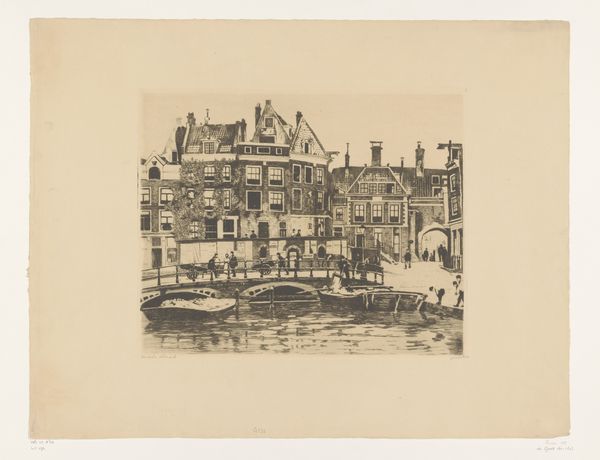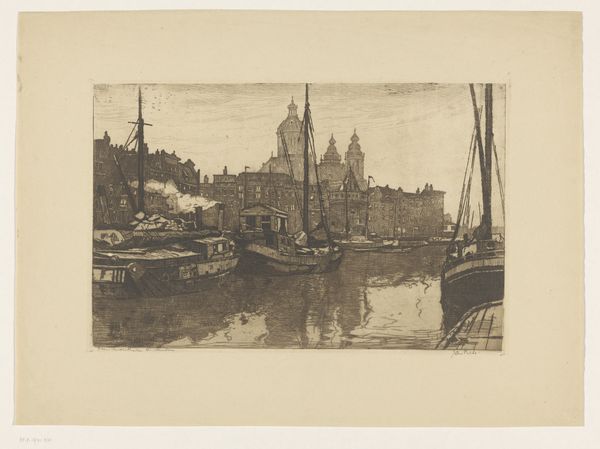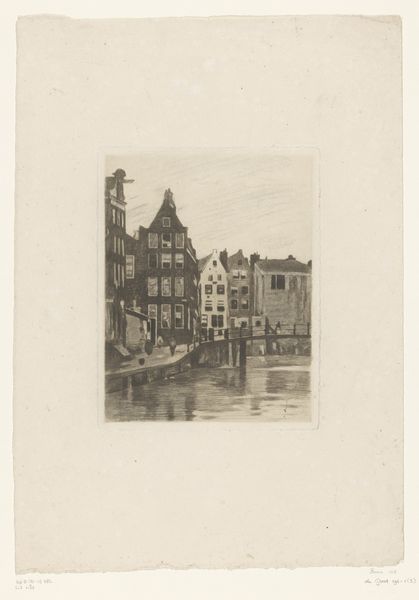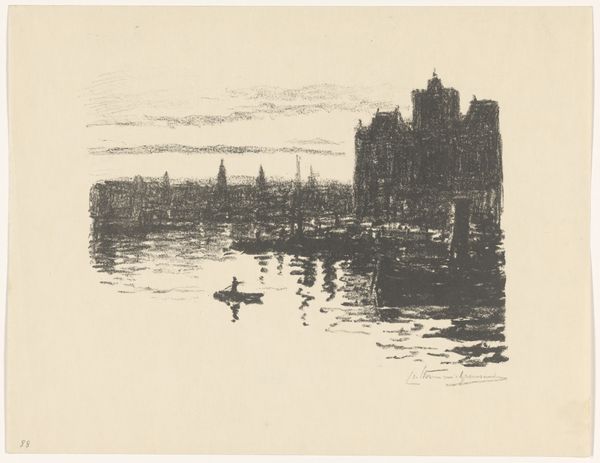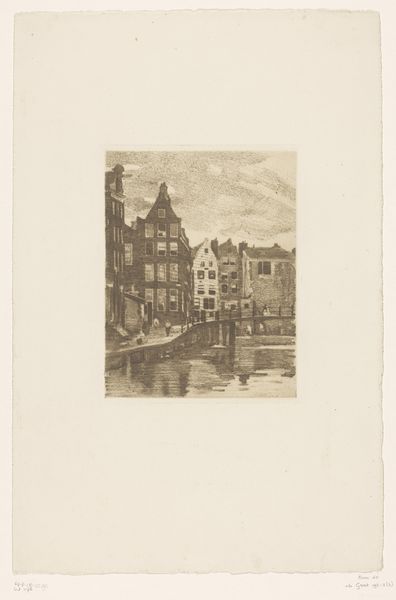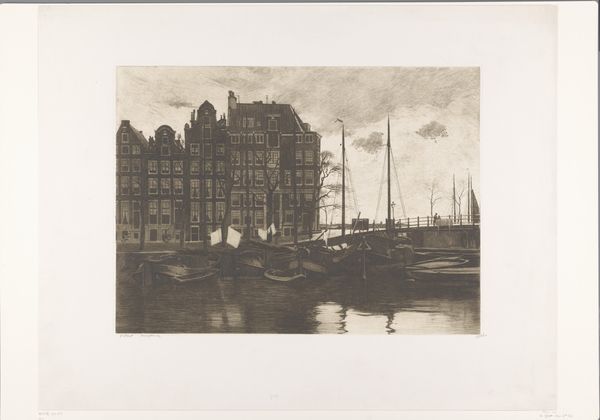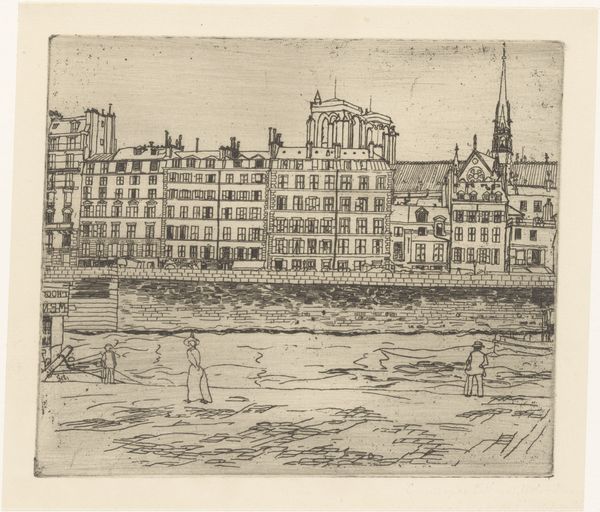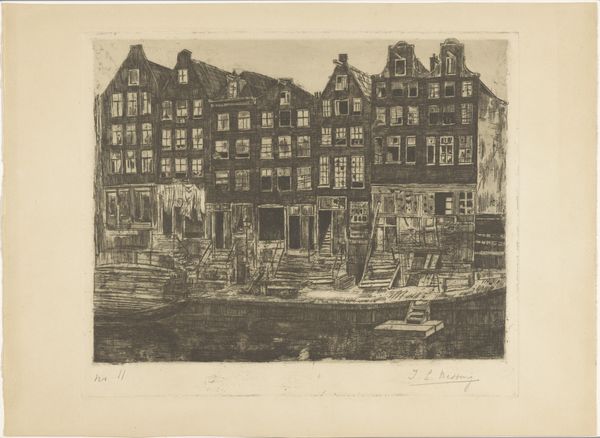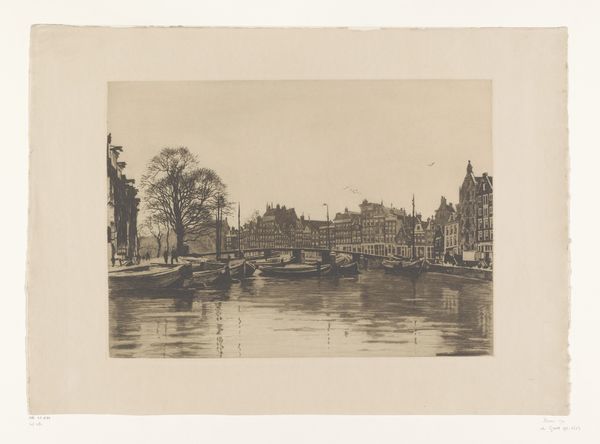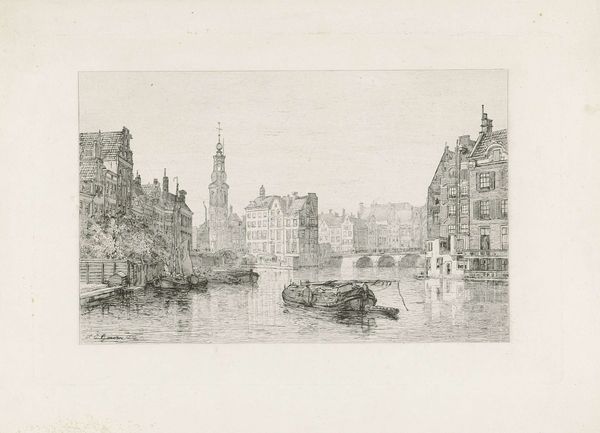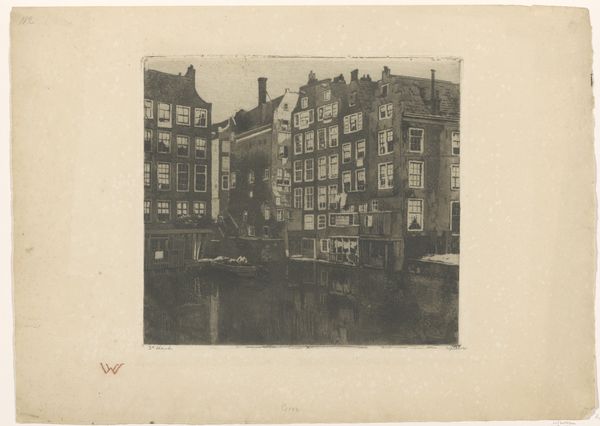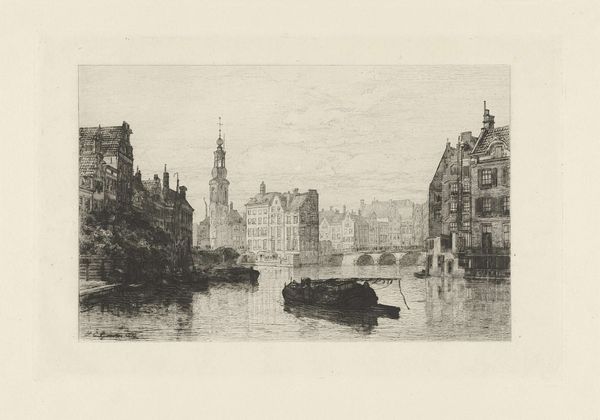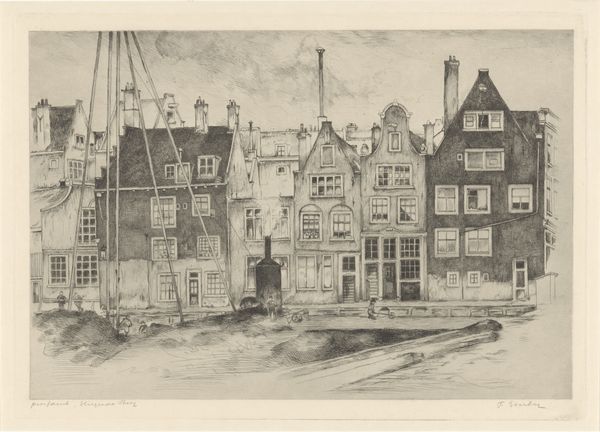
drawing, print, etching, ink
#
drawing
#
ink drawing
# print
#
pen sketch
#
etching
#
landscape
#
ink
#
cityscape
Dimensions: height 393 mm, width 493 mm
Copyright: Rijks Museum: Open Domain
Editor: Here we have Willem Witsen’s "Gezicht op het Damrak," created around 1905 or 1906. It's a cityscape rendered in ink and etching, which gives it a fantastic textural quality. All those intricate details must have taken such careful labour! What captures your attention in this work? Curator: The use of etching really underscores the industrialized aspects of early 20th century Amsterdam. The medium itself, involving acid and laborious processes, reflects the shift towards mechanical reproduction and the changing modes of production affecting art and society at the time. The subject – a bustling waterway, a hive of transportation and commerce. It isn’t simply about the aesthetics, but about the machinery and systems of labour enabling the life in the frame, doesn’t it? Editor: Absolutely! The texture of the print really does communicate the energy and industry of the city itself. It makes me wonder, was Witsen intentionally making a statement about the changing city? Curator: Perhaps. Witsen's choice of etching, a readily reproducible medium, democratized access to the image, making it more broadly available. And note the attention to the rendering of various structures – the cranes, boats, buildings - the tools of industry which dominate the view! Do you see anything particularly striking about how Witsen used his tools and materials? Editor: I see how much detail he fits into such a small area. It makes the picture feel cramped and energetic at the same time! All those small etched lines add so much texture, I can almost feel the brick and the water. I think it gives a sense of what living and working there might have been like back then. Curator: Exactly. Etching was itself a technology impacting artistic production, and he chose to harness it to emphasize, not obscure, those realities, forcing the viewer to grapple with the implications of industrialisation on daily life. Editor: Thank you. It's given me so much to think about when I consider art and labor. Curator: And hopefully, consider the hidden production undergirding the work of art too.
Comments
No comments
Be the first to comment and join the conversation on the ultimate creative platform.
